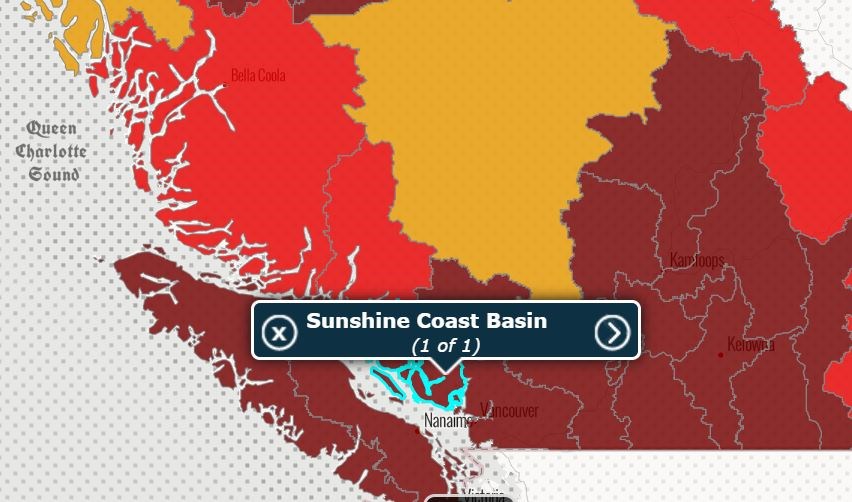On Aug. 24, the province moved the Sunshine Coast to a drought level 5 rating, indicating that adverse impacts from the extended dry weather are “almost certain." Of B.C.’s 34 watershed basin areas, 21 are assessed as at level 5, which is the highest level of drought level classification in the provincial system. Those include all of Vancouver Island, all southern mainland areas except the Upper Columbia Basin, plus a number of northern and central locations.
SCRD late August water update
In the Sunshine Coast Regional District’s (SCRD) water update issued on the same day, utility services manager Shane Walkey summed up that drought classification change as “not a good thing."
He outlined that Chapman Lake is about a half metre higher than it was in late August 2022. Although cooler evening and overnight temperatures are being experienced in the area, if the lack of substantial rainfall persists, the lake's storage level will continue to drop by about two per cent per day. The remaining lake storage level was at 41 per cent and Walkey explained that Stage 4 restrictions for users on the SCRD’s Chapman Water system would likely be called once that dips to somewhere between 10 and 20 percent. Without significant rainfall, his estimates was that would need to be considered in early September.
Walkey also provided an overview of how the siphon systems at Chapman and Edwards Lakes are used to support the water system, noting that the SCRD holds two water licences on each lake. Each has a primary licence that allows access to just over the top of two metres of lake water. Licences to draw water from below those levels to about six metres deep are also in place. To access those depths requires use of the siphons, which can only be activated once Stage 4 restrictions are enacted.
No change (yet) to Chapman Creek EFN
The Chapman siphons, which would be the first ones put into operation, provide a flow of about 260 litres per second, Walkey explained. Under existing licence conditions, 200 litres per second of that water must be released into Chapman Creek to meet environmental flow needs (EFN). He noted that no approval has been received from the province of the regional district’s request to temporarily adjust the Chapman creek EFN to 180 litres per second to divert more flow into the community water system. That request was filed in April.
Late August Chapman water supplies
During the second half of August, 62 per cent of the Chapman system water supply came from Chapman Lake and the Church Road Well Field provided 18 per cent. Gray Creek, which Walkey referred to as a “real trooper” in 2023 water supply, contributed 15 per cent, and the Chaster well was responsible for the remaining five per cent.


